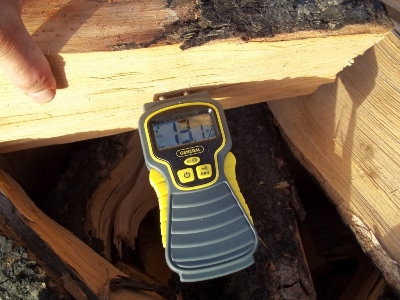 If wood moisture issues come up in your shop, you are not alone. Experts at the Architectural Woodwork Institute say that this time of year, when heating season begins, inquiries pour in on wood movement and cracking.
If wood moisture issues come up in your shop, you are not alone. Experts at the Architectural Woodwork Institute say that this time of year, when heating season begins, inquiries pour in on wood movement and cracking.
“Wood fibers take on and give off moisture in an attempt to come to equilibrium with the ambient relative humidity,” notes Greg Heuer in the latest issue of Design Solutions magazine. “When they take on enough moisture to add water to the cells, the wood fibers swell. When they lose all (or most) of their moisture the fibers shrink, joints open, or cracks develop.” Heuer, who is AWI Chief Learning Officer, says, “The damage very high humidity (above 80%) and very low humidity (below 20%) does to fine woodwork is often permanent.”
AWI devotes a section of its Architectural Woodwork Standards to wood moisture. Expressed as a percent of a board’s weight, moisture content (MC) ranges upward of 40% in newly felled lumber, to kiln dried levels of 6% to 10% – a suitable range to work within.
While wood moisture content is an unchanging concern, technology and techniques for measuring wood moisture content advance at a steady pace. Taking advantage of ever more intelligent electronics, the meters for this purpose – either pin or pinless – measure electrical resistance (pin) or dielectric properties (pinless), both based on the water content in the wood.
Free technical resources about wood moisture are plentiful, such as the 2010 USDA Wood Handbook or from moisture meter suppliers, who have posted white papers and answers to FAQs at their websites. Lignomat, for example, has created moistureproblems.info, devoted to the subject.
Delmhorst FAQs explain how moisture meters work and what makes moisture readings vary. “As wood temperature increases its electrical resistance decreases and indicated moisture content rises,” says Delmhorst. “The lower the temperature, the lower the indicated moisture content.” The site also notes readings vary by wood species, so manufacturers now build in species correction tables, in Delmhorst’s case using USDA Douglas Fir as a baseline reading.
Moisture Meter Selector
Pinless meters measure the moisture content within the wood by sending electrical waves through a sensor that is pressed against the wood. Besides not leaving a mark, pinless meters can scan many boards in a short time.
Pin meters penetrate the wood to measure moisture below the surface. There are also hybrid pin/pinless meters that use both technologies in readings.
Lignomat says cabinetmakers and furniture makers use its Ligno-Scanner D, a pinless moisture meter able to measure boards that are at least ¾Ë. It has 71 settings for species’ corrections as well as the ability to test laminates and other composites. Architects, general contractors and restoration specialists also use its mini-Ligno SD pin moisture meters.
The ProScan, a pinless moisture meter that adjusts readings based on species, was introduced by Delmhorst, and is aimed at woodworkers, manufacturers of flooring and furniture, and general contractors. ProScan includes built-in calibration check and species corrections (.30 - .80 SG). By entering the specific gravity of the wood being tested, the meter automatically adjusts for wood density.
Wagner Meters says its MMC220 is the most popular model for woodworkers, with user-programmable settings for handling wood from rare tropical species to more common softwoods and hardwoods, as well as reading materials with similar densities to wood. IntelliâSense Technology ensures the meter is measuring deeply in the wood without damage to the surface and without interference from surface moisture.
Brookhuis America’s FMD6 measures moisture content with a probe which is placed in or onto the material to be measured. Calibration lines of wood species and building materials are available, and the memory holds 2,000 reads.
General Tools & Instruments’ MMD7NP LCD Moisture Meter, priced at $49 online but sold through dealers, has a measurement range of 0 to 53% for hardwood and 0 to 35% for softwood with an accuracy of ±4%. General Tools top of line MM70, priced at $299, features a remote probe and is available in a hybrid pin-pinless combination.






Have something to say? Share your thoughts with us in the comments below.